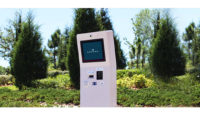The University of Minnesota’s UMore Park wind energy research site in Rosemount, Minn. is not a typical security installation. In fact, security is only secondary to the needs of this project. Yet, Tom Fuxa, director of sales for Plymouth, Minn.-based Paragon Solutions Group Inc., saw an opportunity to apply security technology to this unique project.
The field research station is part of the Eolos Wind Energy Research Consortium, a research-based collaboration between industry, academia and government created to explore wind energy technology, promote economic opportunities in the field, and further national goals to increase the use of wind power. Funded by a $7.9 million wind energy research grant awarded to the University of Minnesota by the U.S. Department of Energy in 2009, the 80-acre Eolos Wind Research Field Station at UMore Park features a Clipper Liberty 2.5 megawatt wind turbine and a 130-meter tall meteorological tower located 160 meters upwind of the turbine.
Located in a somewhat remote, rural area, the site’s wind turbine and tower are substantial landmarks that attract attention. Video images have been used occasionally to identify unauthorized persons trying to access the site and its potentially dangerous, high-voltage equipment. However, security is not the primary function for the surveillance system — research is. Both the turbine and meteorological tower are equipped with an array of sensors, allowing scientists at the university to collect and analyze data about all aspects of the turbine’s performance. Researchers use this data to discover how to improve wind turbine technology to capture more energy, enhance design and performance, and reduce the adverse effects of turbine operation (such as noise and radar interference). Amid the multitude of data provided by various sensors, the video data has unexpectedly taken center stage, “The team looks at the photos and video more than anything else,” said Jeffrey Marr, associate director of Engineering at the University of Minnesota.
“To be able to understand how the blades flex and twist is pretty important in the field and a big challenge,” said Marr. He added that utilizing video data not only enhances the current research, but may also be beneficial in future industry applications. “To reduce the cost of wind energy, the industry is looking at maintenance costs. Any way they can monitor wear and tear will help and is truly invaluable,” said Marr.
Tom Fuxa has worked with the university on a variety of installations, from security to video-learning projects, over the past several years. He saw the wind turbine project as an opportunity to bring the technology and equipment he works with in the security business to new areas. “When we can access this opportunity, it was really exciting for us. There is a lot of possibility,” said Fuxa, who worked with Ahrensburg, Germany-based Basler AG and Beaverton, Ore.-based Milestone Systems Inc., to obtain donations of the cameras, lenses and software for the project.
The installation features three Basler BIP2-1300c-dn IP box cameras, one installed on the turbine nacelle and two positioned at different heights on the nearby tower. The cameras are encased in Aigis Mechtronics HS9484-2HB camera housings, which each include a heater and fan to protect the cameras from Minnesota’s extreme weather conditions. The BIP2-1300c-dn cameras can capture video at 25 frames/second and employ CCD technology to capture more light and provide better images at night.
Chris Feist, engineer at University of Minnesota, explained that these features are critical to their research, “During hours of non-daylight, the atmosphere has different properties that affect the performance of the wind turbine. It is important to consider all operating conditions for the turbine and having low-light functionally in a camera is important, specifically when observing ice accumulation on the blades,” Feist explained.
The video equipment is supported by the Milestone XProtect Enterprise software. The XProtect Open Software Development Kit enabled IT staff to easily integrate the video surveillance software with other university applications. “Vital to the success of this project is Milestone’s open architecture,” said Mike Tice, north central territory manager of Milestone Systems. Not only does it allow for easy installation, but it also facilitates future additions or upgrades, which will allow researchers to gain more out of the video data as they explore the system’s full potential. “We can add analytics as needed,” said Tice.
David Olsen, information technology professional at the University of Minnesota, was very pleased with the cameras and software, which he found to be very intuitive. He especially likes the Smart Client application that can be downloaded directly from Milestone’s server and the video archive features. “The handling and archiving of video is nice,” said Olsen. “It saves me the time and work I’d have to write something myself.”
Overall, Marr and his colleagues have been extremely happy with the system, “This one worked out of the box. It’s doing what we need to do now and has room to do much more.” Four months into the research project, the researchers are just beginning to understand the range of possible uses for video data in their research.
The successful application of the video system demonstrated here has implications beyond the University of Minnesota research, opening the door to new possibilities in the wind energy industry more broadly. “We sent images to the OEM, and they were quite intrigued,” said Marr. “I think that these kinds of tools will be naturally integrated with other applications.”
Beyond the potential benefits for the wind energy industry, this installation unveiled new opportunities for security integrators as well. Based on their experience with this project, Fuxa said that Paragon is looking to expand its services and explore more non-traditional applications for security products and services, “This wind turbine project has been a launch point for us. We’re looking for where we can take the technology.”











